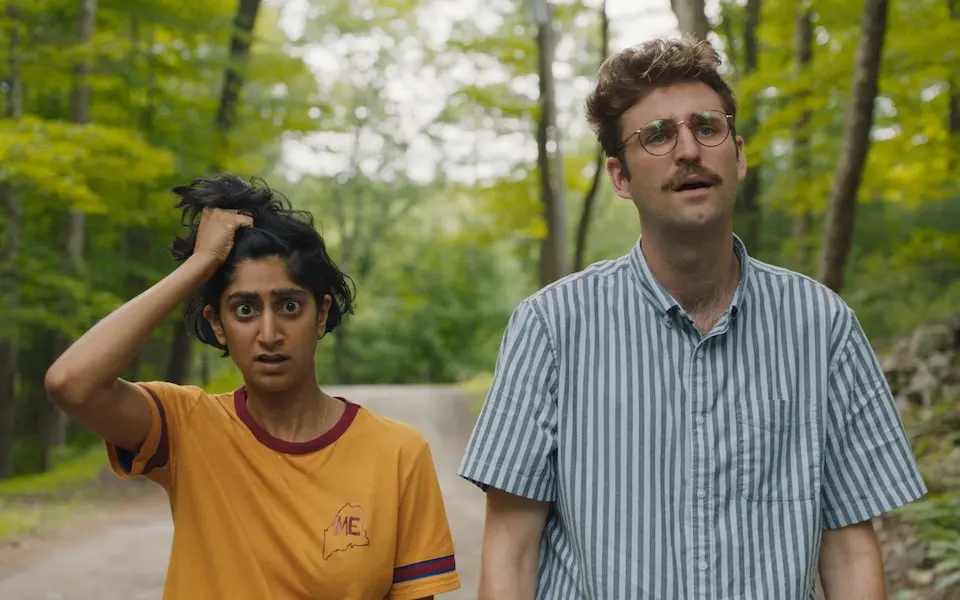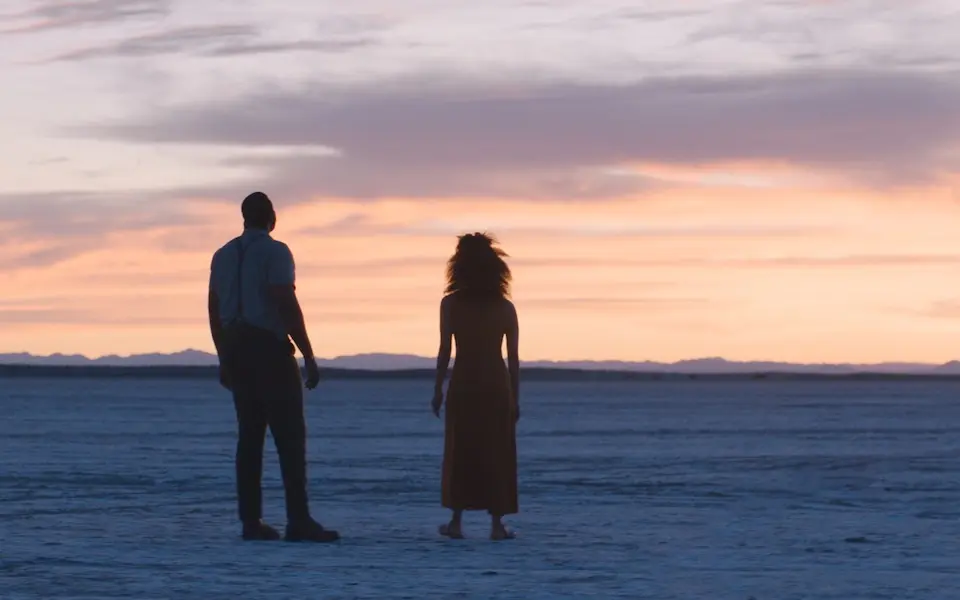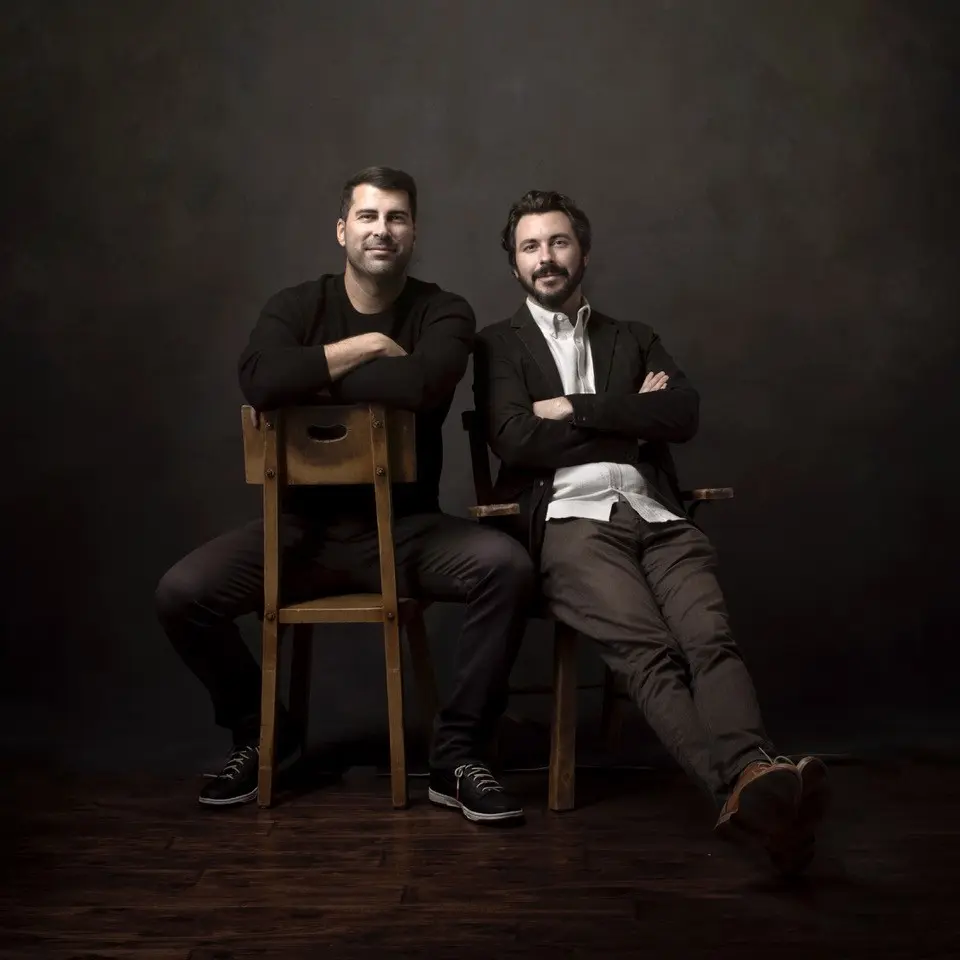
Sundance Film Festival 2020, Dropbox for filmmakers
Pulling off major sci-fi surprises on an indie budget for the Sundance film Save Yourselves!
Published on January 31, 2020
Are our phones setting us free or making us addicts? Would we be better off off the grid?
These are the questions haunting the characters of Save Yourselves!, a new indie film premiering at the 2020 Sundance Film Festival.
Described by Sundance as “an ode to an internet-savvy generation that’s never known connection without autocorrection,” this sci-fi satire tells the story of a young couple from Brooklyn who decide to unplug and head upstate to escape nagging notifications about the bad news of the world. But the disconnection comes at a cost.
At Sundance 2020, we’ve been talking with filmmakers to find out how they work together from script to final cut. Here, writer/directors Eleanor Wilson and Alex Huston Fischer, editor Sofi Marshall, and visual effects supervisor Jeff Desom share how they made sci-fi magic on an indie movie budget.
How did the idea for the story come to you?
Alex: Eleanor had the idea a couple years ago. Then she asked me if I was interested in this idea because we thought it’d be fun to write together. This basic premise of a couple being oblivious to the end of the world started to take a little more relevance because the 2016 election was happening, and all sorts of stuff was happening all over the world. We realized we were in a bubble living where we were living.
"Now you can get any information, you can learn about all the horrific things happening in the world, but there aren’t nearly as many actionable things to do."—Alex Huston Fischer
What do you think is causing the feeling that we are communicating more, but connecting less?
Eleanor: I think that's typical of our generation and happens for everyone. It’s maybe less in-depth communication.
Alex: The thing we were latching onto was the fact that now you can get any information, you can learn about all the horrific things happening in the world, but there aren’t nearly as many actionable things to do as there is information about the upsetting nature of the world.
So in the first scene in the movie, Jack, the main character, sees so much food wasted in New York. He feels very passionately about it, [but] he doesn't have access to his own thoughts. He has to look up that fact on his phone.
It’s just this idea that we know so much, we are passionate about things, but these characters can't figure out how to deal with any of it. They decided the problem is their phones, so they go upstate. When really, it’s a much deeper problem than that.
How did you start to bring other crew members into the process?
Eleanor: Jeff Desom is someone we talked to very early on. He’s our effects supervisor. There’s one tricky sequence, but we don’t want to give spoilers away. Jeff told us about a good way to approach [the sequence]. Instead of using green screen, we used projection.
We ended up cornering him at a party one night and convincing him that he should do this with us. This was six months before we started shooting. It was great to have someone on the post team on board early so we could really talk about how to shoot things. A lot of the decisions, like using projection, ending up happening before the shoot.
Jeff became invested in the process in a different way from such an early stage. It’s hugely beneficial to us, having collaborators on board so early, especially on an indie film. That doesn’t often end up happening.
Alex: We ended up working with a lot of people, especially in post, who are directors themselves. Jeff is a director first and foremost, but because he's so good at effects, he gets roped into projects all the time. We always work with people who are big into collaboration. Some people are a little more specific about how they like to work. They like to just stay in their lane and not have anybody else in their lane, but we like working with people who are a little more open minded about that. It’s just more fun and makes the project better.
What was the biggest challenge you had to overcome?
Alex: The rain. We shot in upstate New York in June. It was forecast to rain pretty much every day. So we couldn't really plan. The whole team had to come up with different versions of the schedule constantly.
Eleanor: It really did impact the schedule on a daily basis. In terms of other challenges, the fact that we were doing a sci fi movie on an indie budget is a pretty big challenge off the bat. ‘What's gonna be the coolest thing we can do within our means?’ A lot of that was collaborating with our special effects supervisor who was on set with us—taking the footage we had shot and figuring out ways we can manipulate the footage very subtly to make things look more alive. We want things to be subtle and feel very real. One of my favorite quotes from Alex was, “I want to feel the effects, not see them.”
Jeff: Usually, the effects supervisor is on set and I wasn't on set for this one. From my point of view, that made it a bit more nerve wracking. I was always getting updates on the fly, while they were on set. I could always chime in on something in case something was going to be a huge headache down the line in post. But overall, I think all the footage that came back already had this built-in, practical feel. They did a lot of effects, so it was a matter of manipulating the existing substance. A visual effects supervisor usually has an army of patches. But for this, it was more organic: figuring out how you could enhance what was already there, and trying to find subtle ways to do that.
"What's gonna be the coolest thing we can do within our means?"—Eleanor Wilson
What was the most gratifying moment of the production?
Eleanor: The end of the movie. The projector shoot day. It took so much preparation. It felt like a total triumph for us to pull that off because it was complicated to say the least. Trying to do something on that scale on an indie budget was really cool.
Sofi: When I got that footage and saw it was gonna work, that was amazing. The first practical stunt that came in—just getting that footage in and assembling it, then seeing that everything was relatively working, and being able to adjust the future stunts—that was the first moment I was like, ‘Oh, yeah, this is all really going to work.’
Eleanor: One cool thing was when we started realizing how much could be done with the edit and with the effects. We started out thinking, ‘It's gonna be about 10 effects or so.’ It ended up being over a hundred. Jeff would start working on something and I would be like, ‘Oh, you can do that?! What can you do for this scene?’ We just kept adding stuff.
How do you see technology impacting filmmaking in the next 5-10 years?
Sofi: For me, we're already moving in this direction. As we saw on this project, filmmaking can become more remote. It was so cool that we were able to be literally on opposite coasts, collaborating in real time to create something. All the way from the script and development process completely through to post, we were editing in real time together across the country with virtually no lag. That's really cool. It opens up so much more that you can do when you don't have to be location independent. It frees up the budget to put more right back into the creative instead of having to host people in a different city for the edit. I think that's just getting stronger as we have more options to be able to do that.
Alex: Like Sofi was saying, the flexibility with technology. Working with Dropbox and Adobe products like After Effects, now you basically can do more on a smaller scale, which means a lot more of the budget is going onto the screen. The quality of the movie is improving, as opposed to paying for infrastructure to do the same thing. In next 5-10 years, it’s just going to get better and better. I can't wait ‘til everything's just on the cloud and you have raw files in the cloud. That would be pretty exciting.
Jeff: The flexibility and freedom you get when you don't have to stick to one location, that's really amazing these days. I don't know how they did it 10 years ago. A film like this, you probably would have done this outside of the studio, at a big company with servers running and a team of people working on it. We could really work with a network of people that were all over the place.
Eleanor: Dropbox was an essential part of the process. We were working with Giulio in Italy, Nick in New Orleans, Jeff was in Luxembourg and Ben in LA. Alex and I were between New York and LA. And everyone was working out of the same shared Dropbox folder. It was just easy to keep on top of versions when something new was coming in. We particularly love the [Smart Sync] feature where you can have all the files on your finder window and selectively online and offline them, and pull them in and out. My laptop was completely running out of space at a particular point in the edit. I was like, ‘I need the files to connect to the project!’ Then Dropbox solved that and it just changed everything.
Save Yourselves! premiered January 25 at the 2020 Sundance Film Festival.
To learn how filmmakers are using Dropbox to simplify collaboration and work efficiently through every stage of the production, check out dropbox.com/film.




